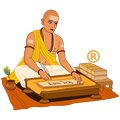























Notes: All timings are represented in 12-hour notation in local time of Columbus, United States with DST adjustment (if applicable).
Hours which are past midnight are suffixed with next day date. In Panchang day starts and ends with sunrise.
Panchang is like time in Vedic Astrology. In Modern age people use Calendar and Clock to keep time but followers of Hinduism use Panchang for time keeping. Panchang tells not only Sunrise, Sunset, Moonrise and Moonset but also auspicious and inauspicious times in a day.
In other words, Panchang is a Vedic clock, which is valid only for the geo location for which it has been built. Hence, Panchang is created for each city in the world separately.
The number of core elements in Panchang are five, namely Tithi, Nakshatra, Yoga, Karana and Var i.e. weekday. With the help of these five elements and combining them with additional elements e.g. Lagna, Sunrise, Sunset, Moonrise, duration of day and night, zodiac positions of Chandra and Surya, multiple auspicious and inauspicious Yogas are formed.
Some Yoga which doesn't occur daily but randomly on any day are also included in Panchang. Drik Panchang includes Bhadra, Panchaka, Ganda Mula, Vinchhudo, Dwipushkar Yoga, Tripushkar Yoga, Ravi Pushya Yoga, Guru Pushya Yoga, Sarvartha Siddhi Yoga, Amrit Siddhi Yoga, Ravi Yoga, Jwalamukhi Yoga, Aadal Yoga and Vidaal Yoga, which is collection of important auspicious and inauspicious Yoga in Dainika Panchang which occurs randomly on any day.
Panchang is like Vedic clock which should be referred throughout the day. Some rituals which require daily reckoning of Panchang are -
Above examples are just drop in the ocean and there are numerous ways, Panchang is used by the followers of Hinduism. Upcoming festivals and fasting days, various significant auspicious and inauspicious Yogas are also reckoned with Dainika Panchang.